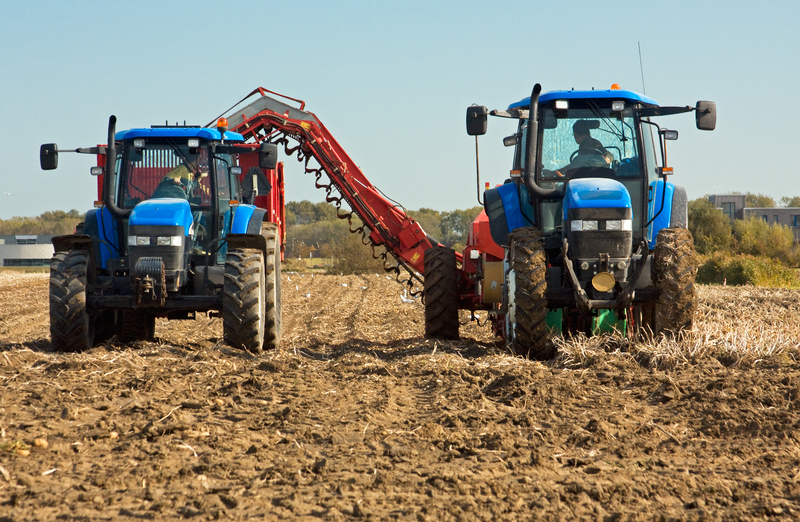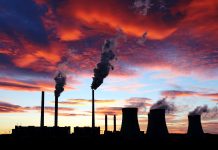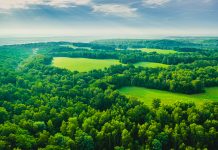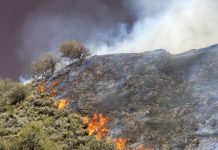AG Editor, Laura Evans speaks to Rachel Steele, National Climate Hub Coordinator at the U.S Department of Agriculture about how they are helping to reduce the impacts of climate change for farmers and foresters…
Agriculture plays a key role in society worldwide. Seen as the backbone of the economic systems of most countries, it not only provides necessary sources of food and fiber, but also offers emerging economic opportunities in renewable energy, broadband, and recreation. Climate change presents real threats to agriculture, in regards to production, forest resources and rural economies. As the risks of climate change are becoming more prevalent, such as more severe storm events, it is increasingly important to help reduce these risks for land managers.
As the world population continues to grow – to an estimated 9 billion people by 2040 – farmers will have to feed not only the U.S, but the rest of the world. To help farmers adapt to a changing climate, the U.S. Department of Agriculture (USDA) is working on solutions to build resilience to climate variability. Rachel Steele, National Climate Hubs Coordinator at USDA, talks to AG Editor Laura Evans about the problems climate change causes for agriculture and the Department’s solutions.
“Climate Change is having profound direct and indirect effects on agriculture with considerable regional variance,” explained Steele. “Some of the direct effects include: increased annual average and seasonal air temperatures; increased extreme precipitation events as well as increased risk of damage to crops, soils, and infrastructure; flood damage is expected to increase; severe wind and storm damage, and warmer temperatures increase the potential for soil moisture stress and drought.
“Indirect effects include: greater weed pressure increases the risk of crop loss; invasive weed competition may increase in pastures, orchards, and other perennial agriculture; populations of many damaging insects may increase; the risk of plant pathogens may rise, and animals may be affected by heat stress as well as increased pathogens and parasites,” she said. USDA is trying to make sure farmers have all the information and tools they need to deal with these effects.
For example in February 2014, Agriculture Secretary Tom Vilsack launched the USDA Climate Hubs. When doing so he emphasised, “for generations, America’s farmers, ranchers and forest landowners have innovated and adapted to challenges. Today, they face a new and more complex threat in the form of a changing and shifting climate, which impacts both our nation’s forests and our farmers’ bottom lines.”
The Regional Climate Hubs were established to synthesise and translate climate science into easy to understand information and tools, so that land managers can make climate-informed decisions.
Steele explained, “The Climate Hubs” work across USDA agencies and through established networks of partners on the ground to transmit information to technical service providers. USDA has the advantage of having an extensive network of staff and partners, such as Natural Resources Conservation Service (NRCS) regional staff, University Extension Agents, Certified Crop Advisers, seed dealers, Farm Service Agency (FSA) agents, and other trusted regional partners. “The Hubs are focused on building climate literacy “in-reach” to USDA staff and “outreach” via regional trusted channels and partners. The Hubs are synthesising the science, producing the tools and ensuring that these existing regional partnerships and networks have a good understanding of what climate change means for them at the local level and at the seasonal time-scale. Farmers are business managers, they need to have the best available information and tools to manage risk and understand what different decisions will mean for their land. The Hubs are working across the country to ensure that they have this information available to them.”
The Hubs have been effective in their first 2 years of existence. A few of the many developments include: writing eight regional vulnerability assessments; synthesising the forest service drought synthesis report; developing a Climate Hubs tool shed, which is an inventory of tools for working land managers; establishing strong regional partnerships with private, federal entities, and University/Extension partners.
“We’ve developed adaptation handouts, videos, factsheets, email alert systems, tools, and also a close working partnership with other federal agencies’ climate networks, such as the Department of Interior’s Landscape Conservation Cooperatives, Climate Science Centers, and National Oceanic and Atmospheric Administration (NOAA) Regional Integrated Sciences and Assessments (RISA), who have regional climate networks as well. We linked up with them to really build on their climate knowledge and information to make sure it gets to the people that need it.”
In addition to the regional Climate Hubs, USDA launched The Building Block for Climate Smart Agriculture a year ago. This initiative represents a comprehensive and detailed approach to support farmers, ranchers, and forest land owners in their response to climate change.
The framework includes a road map that outlines progress, implementation plans and case studies for the 10 building blocks. These 10 building blocks span a range of technologies and practices to reduce greenhouse gas emissions, increase carbon storage, and generate clean renewable energy. The building blocks include: soil health; nitrogen stewardship; livestock partnerships; conservation of sensitive lands; grazing and pasture lands; private forest growth and retention; stewardship of federal forest; promotion of wood products; urban forests and energy generation and efficiency.
“Working through existing programs and authorities, USDA is committing to reduce over 120 million metric tons of CO2e per year by 2025,” said Steele. “These building blocks are voluntary and incentive-based; focused on multiple economic and environmental benefits, designed to meet the needs of producers, and measured to evaluate progress.
“The USDA climate hubs have been communicating the building blocks at the regional level providing the latest information and research on the various technologies involved in the building blocks, and providing information about their effectiveness at the regional level. In addition they have been bringing USDA agency staff to the table to discuss climate change and opportunities/ barriers as we mitigate emissions and facilitate climate smart agriculture.”
Research is a key part of the work that USDA is doing in order to provide information for farmers and landowners. As part of the work at the Regional Hubs, it’s important to be able to communicate the research and information that they receive from these programmes.
“The Climate Hubs not only communicate the research and information that’s coming out, but also take back information from the farmers to the research entities” said Steele.
Looking ahead, the Climate Hubs will continue to focus on partnership building, climate literacy “in-reach” and out-reach, capitalising on regional synergies to communicate climate science, developing tools, conducting assessments, and using innovative strategies to share adaptation and mitigation demonstrations with working land managers.
Rachel Steele
National Climate Hub Coordinator
U.S Department of Agriculture
RSteele@oce.usda.gov











